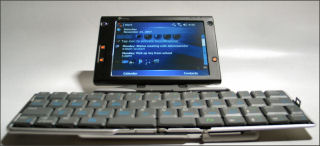
One of the truly bad recent web-ideas was the so-called dot-mobi (.MOBI) top-level domain that became available just over a year ago in September 2006. Its purpose was to create a top-level domain where mobile friendly sites would live. You can only who came up with the bright idea to force mobile device users to actually type more characters to get to a mobile friendly web site. Truly a duh moment. Fortunately, cooler and smarter heads prevailed and we really don’t talk about dot-mobi anymore. The cooler heads decided to either (1) make their site auto-magically detect if a mobile device is detected and present a mobile friendly view or (2) use the short prefix “m.” for their mobile-specific site. One example is CNN who, in the past, I’ve named as a particularly mobile-unfriendly site. However, they created a mobile friendly site sometime in the past year or so and gave it the URL m.cnn.com (see the screen capture example above).
In general, these m-dot (m.) sites are viewable on your desktop too. So, you can check on interesting sites from a desktop with a full-sized keyboard before typing the URL on a mobile device’s thumb keyboard.
